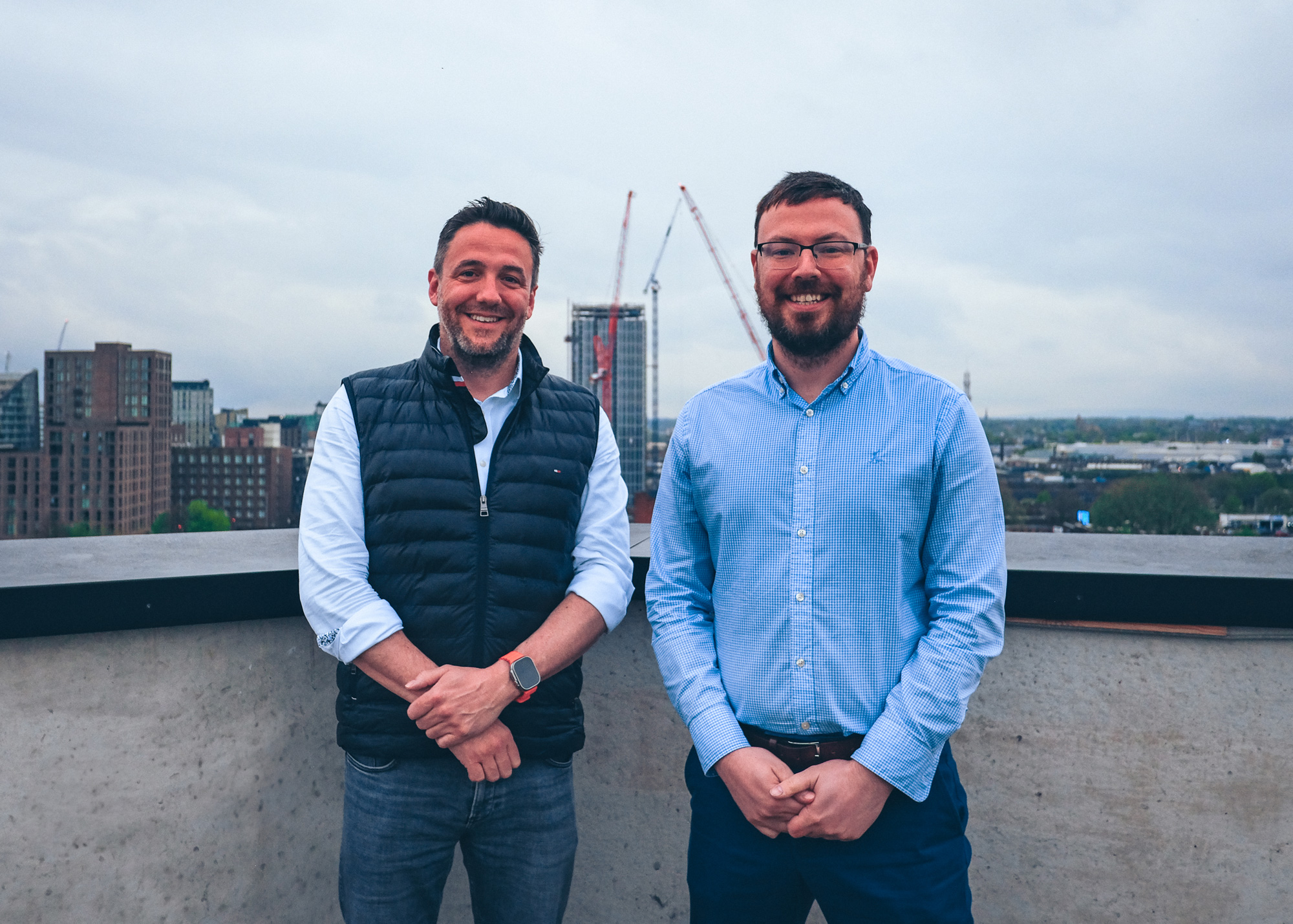In the rapidly evolving landscape of rail construction, digital transformation is no longer a luxury but a necessity. As the sector confronts the imperatives of efficiency, sustainability, and innovation, rail contractors are at a pivotal juncture where embracing digital technologies is critical for survival and growth. This article explores the multifaceted journey towards digitisation, from strategic integration of technology to operational excellence, and the challenges that must be navigated to secure a competitive edge in a digital world.
Key Takeaways
- Digital transformation is essential for rail contractors to remain competitive and align with industry best practises.
- Strategic integration of technology, such as IoT and hyperconnectivity, is crucial for enhancing efficiency and benchmarking digital maturity.
- Operational excellence can be achieved through the adoption of green and digital solutions, with a focus on enterprise-wide transformation.
- Rail contractors must address the digital skills gap and overcome resistance to change to successfully navigate the challenges of digital adoption.
- The future of rail construction will be shaped by the deployment of advanced technologies like AI and robotics, necessitating preparedness for their impact.
The Imperative of Digital Transformation for Rail Contractors
Understanding the Digital Transformation Spectrum
Digital Transformation (DX) is not a one-size-fits-all process; it encompasses a broad spectrum of technological advancements and strategic shifts. Rail maintenance in CP7, for instance, illustrates the necessity for embracing this spectrum, as it grapples with the challenges of ageing infrastructure, increasing passenger demand, and financial constraints. Network Rail's adoption of innovative technologies is a testament to the transformative power of digital solutions.
The spectrum of digital transformation includes a variety of new technologies, each with numerous applications that bridge the real and the virtual world. This transition often involves a shift from human to machine autonomy, redefining operational processes to secure a competitive edge. It's not merely about upgrading existing services but about creating new business propositions that are sharply focussed on end-user needs.
It's crucial to understand that digital transformation is not a destination but a continuous journey. The term itself may seem ubiquitous in our digital age, yet it signifies a perpetual state of evolution. Enterprises must remain agile, constantly identifying and reacting to technological changes to thrive in a competitive landscape. This approach is essential for rail contractors who must navigate the complexities of digital adoption to ensure operational excellence and future readiness.
Key Domains of Change in Construction
The construction sector is undergoing a profound transformation, driven by digital innovation. The key domains of change are pivotal to improving infrastructure delivery and ensuring projects are resilient to the inevitable challenges that arise. These domains include:
- Preconstruction management, which sets the stage for project success.
- Risk mitigation tactics to navigate budget and site condition issues.
- Design and assessment processes that are critical for project viability.
Each domain requires a strategic approach, integrating digital tools to enhance efficiency and accuracy. For instance, a thorough preconstruction process can preemptively address potential roadblocks, ensuring a smooth start. Moreover, dedicated resources for formal change management are essential, as transformations do not occur without substantial effort. Embracing these changes is not just about adopting new technologies; it's about rethinking the entire construction process to align with the digital era.
Aligning with Industry Best Practises
In the journey towards digital excellence, rail contractors must not only innovate but also align with industry best practises. This alignment ensures that digital strategies are not developed in isolation but are informed by a broader understanding of what works within the sector.
- Prioritise projects based on their potential commercial impact, starting with process automation that often yields immediate returns.
- Consider the context and industry relevance when selecting vendors, favouring those with a proven track record in similar domains.
- Look for solutions that can be integrated seamlessly with existing systems, avoiding the need for ground-up development unless necessary.
By adhering to these practises, contractors can leverage the collective wisdom of the industry, ensuring that their digital transformation efforts are both effective and sustainable. It's about choosing the right partners, focusing on impactful projects, and building upon a foundation of tried-and-tested solutions.
Strategic Integration of Technology in Rail Construction
The Role of IoT and Hyperconnectivity
In the realm of rail construction, the integration of the Internet of Things (IoT) and hyperconnectivity is not just a trend, but a strategic imperative. The intelligent infrastructure in the rail industry is rapidly evolving, leveraging sensors and data analytics to transform operations. This shift promises to increase capacity, reduce journey times, and significantly improve reliability and safety. However, the journey towards a fully integrated digital rail system is not without its challenges. Key among these are the costs involved, the need for specialised skills, and the operational changes required to accommodate new technologies.
The concept of hyperconnectivity encompasses a range of technologies from Bluetooth to 5G, all contributing to a more connected and responsive environment. For rail contractors, this means:
- Embracing fibre optics and advanced wireless systems for real-time data transmission.
- Investing in IoT devices to monitor and manage assets more effectively.
- Utilising Edge Computing to process data closer to the source, enhancing decision-making speed.
Network Rail's commitment to revolutionising UK rail travel is a testament to the potential of these technologies. By investing in intelligent infrastructure, they aim to set a new standard for efficiency and passenger experience. As rail contractors, it is crucial to align with such industry leaders, not only to remain competitive but also to contribute to the overarching goal of a digital and interconnected future.
Procurement Strategies for Digital Tools
In the realm of rail construction, the procurement of digital tools is not just about purchasing software or hardware; it's about investing in the future of the industry. Understanding the procurement process is crucial, as it involves identifying needs, sourcing suppliers, negotiating contracts, and managing supplier relationships. This comprehensive approach ensures that the digital tools selected are not only advanced but also align with the strategic goals of the project.
Selecting the right vendor is a pivotal decision that can significantly influence the success of a digital transformation project. It's essential to consider the project's phase and function when choosing a vendor. For instance, a project in its initial planning phase may require a different set of tools and expertise compared to one that is deep into mass implementation. Moreover, the 'DXSP' umbrella encompasses a range of companies, each with unique capabilities, from strategic consultancy to practical implementation.
To navigate this complex landscape, here are some steps to consider:
- Assess the digital transformation capabilities of potential vendors, such as ATOS or Deloitte.
- Determine the specific needs of your project and match them with the vendor's strengths.
- Utilise resources like Transforma Insights' Peer Benchmarking reports to gauge vendor capabilities.
- Ensure that the chosen vendor aligns with your long-term strategic goals and can provide support throughout the project lifecycle.
Benchmarking Digital Maturity Against Peers
Benchmarking digital maturity is a critical step for rail contractors to understand where they stand in the digital landscape and identify areas for improvement. The Infrastructure Client Group benchmarking report underscores the importance of this exercise, revealing that many in the industry are yet to fully capitalise on the potential of digital tools. By comparing their digital maturity with that of their peers, contractors can gain valuable insights into their own progress and set realistic targets for advancement.
Key reports such as those from Hyperscaler and KPMG offer a comprehensive analysis of digital capabilities, covering a spectrum of technology areas including AI and IoT. These reports serve as a guide for rail contractors to assess their digital transformation journey in relation to industry leaders like AWS, Google, and Microsoft. A structured approach to benchmarking might include:
- Reviewing industry-specific reports and assessments.
- Analysing the digital capabilities of top performers.
- Identifying gaps in your own digital strategy.
- Setting actionable goals to close those gaps.
Embracing such a methodical benchmarking process not only fosters a culture of continuous improvement but also ensures that rail contractors remain competitive in a rapidly evolving digital world.
Operational Excellence Through Digital Innovation
Enhancing Efficiency with Green and Digital Solutions
In the quest for operational excellence, rail contractors are increasingly turning to green and digital solutions to enhance efficiency. The integration of digital technologies is not just a trend but a strategic imperative that enables real-time monitoring and control over the entire production and emission process. By adopting clean production technologies and end-of-pipe treatment, contractors can achieve significant strides in low-carbon development.
Key benefits of this approach include:
- Improved carbon emission reduction performance
- Accelerated development and delivery of projects
- Enhanced 'information power' and cross-sectoral collaboration
For instance, Network Rail's commitment to modernising the railway with digital signalling, automation, and infrastructure upgrades exemplifies the potential to improve efficiency, safety, and sustainability. This not only benefits passengers and freight customers but also sets a benchmark for the industry. As high energy-consuming enterprises invest in green innovation and digital transformation, they must do so in a structured manner, focusing on product, production, and management to build a robust 'green and digital' platform.
Adopting Best Practises in Digital Transformation Implementation
The journey towards digital excellence in rail construction is not just about adopting new technologies; it's about embedding a culture of innovation and continuous improvement. Best practises in digital transformation implementation are not static; they evolve with the industry's landscape and the advent of new technologies. To stay ahead, rail contractors must:
- Assess and recalibrate their strategies against industry benchmarks.
- Ensure a holistic approach that encompasses people, processes, and technology.
- Foster a culture that embraces change and encourages digital literacy.
It is crucial to recognise that digital transformation is an enterprise-wide endeavour. It requires a shift in mindset from all levels of the organisation, from the boardroom to the construction site. This shift is often the most significant barrier to success, necessitating a robust change management process. By addressing these internal challenges, contractors can mitigate risks associated with cybersecurity threats, data integrity, and the complexities of new business models. Ultimately, the goal is to achieve operational excellence and a competitive edge in a rapidly evolving digital world.
Enterprise Transformation: Beyond Technology Adoption
The journey towards digital transformation is not solely about integrating new technologies; it's a comprehensive enterprise transformation. This evolution encompasses a shift in business models, the adoption of new processes, and the development of fresh partnerships. It's a strategic move that requires a deep understanding of both the commercial and operational facets of the business.
Key considerations for a successful transformation include:
- A clear vision and leadership commitment
- A culture that embraces change and innovation
- A robust change management process
- Continuous learning and skills development
- Strategic partnerships and collaborations
The biggest barriers to digital transformation are often internal, rooted in the need for cultural change and the development of new competencies. To navigate this complex landscape, rail contractors must adopt a mindset of continuous adaptation, rather than viewing transformation as a finite project with an end point. By doing so, they position themselves to respond dynamically to the evolving demands of the digital age, ensuring long-term success and resilience in a competitive market.
Navigating the Challenges of Digital Adoption
Addressing the Skills Gap in Digital Expertise
The rapid evolution of digital technologies in rail construction necessitates a workforce that is not only tech-savvy but also adaptable to the continuous learning curve presented by new tools and systems. Addressing the skills gap is critical to ensuring that the benefits of digital transformation are fully realised.
To bridge this gap, rail contractors must invest in comprehensive training programmes that are tailored to the unique demands of the industry. These programmes should focus on:
- Up-skilling existing staff to handle advanced digital tools
- Attracting new talent with the requisite tech expertise
- Creating partnerships with educational institutions for a steady pipeline of skilled workers
Moreover, it's essential to foster a culture of innovation where continuous professional development is encouraged and rewarded. This approach not only equips employees with the necessary skills but also aligns workforce capabilities with the strategic goals of the organisation.
It's worth noting that industry leaders like Network Rail are already setting the pace by leveraging technologies such as AI, ML, Blockchain, and 5G. These advancements are aimed at automating tasks, improving decision-making, and enhancing customer service. However, they also present challenges such as system compatibility and the need for extensive staff training. With efficiency targets for CP7 heavily reliant on digital technology, addressing the skills gap becomes even more pressing, especially when considering the drive towards reducing the workforce and implementing green initiatives.
Overcoming Resistance to Change
Resistance to change is a natural human response, particularly when it comes to altering the familiar landscapes of our workplaces. For rail contractors, overcoming this resistance is crucial to unlocking the full potential of digital transformation. It's about more than just introducing new technologies; it involves a cultural shift that embraces innovation at every level.
To navigate this transition effectively, a structured change management process is essential. This should include:
- Engaging with all levels of the organisation to communicate the benefits of change.
- Redefining roles and objectives to align with new digital strategies.
- Providing training and support to build digital competence across the workforce.
Leadership plays a pivotal role in this process, providing stability and direction during periods of change. By demonstrating commitment and the value of new digital approaches, leaders can inspire their teams to embrace the future with confidence. As we've seen with Network Rail's response to the pandemic, the ability to adapt through coordinated efforts and strategic tech investments is key to navigating challenges such as economic uncertainty and the impact of COVID-19.
Ensuring Data Security and Compliance
In the digital era, ensuring data security and compliance is a cornerstone of maintaining trust and integrity within the rail construction industry. As contractors transition to digital platforms, they must safeguard sensitive information against cyber threats and adhere to stringent data protection regulations.
- Trust in the use of public data is paramount, and contractors must demonstrate a commitment to protecting personal data.
- A robust data protection programme is essential, encompassing infrastructure and security measures that align with global standards.
- Addressing the skills gap in digital expertise is crucial for implementing effective cybersecurity strategies.
The global rail sector's digital transformation brings with it the responsibility to manage data with the utmost care. Contractors must not only understand the problems data is intended to solve but also create governance structures that foster innovation while ensuring data privacy. By doing so, they can build a more trustworthy approach to handling public data, giving stakeholders greater control and confidence in the digital advancements of the industry.
The Future Landscape: Rail Contractors in a Digital World
Predicting Trends in Technology Deployment
As rail contractors look towards the future, understanding and anticipating technological trends is paramount. The integration of transformative technologies is not just about keeping pace with competitors; it's about redefining the boundaries of what's possible in rail construction. The Ford & Stanley Director's prediction for 2024 trends underscores the importance of tech innovations in enhancing travel and operational capabilities.
Key trends likely to shape the industry include:
- The adoption of predictive maintenance systems
- The implementation of advanced image processing techniques
- The utilisation of bots for improved workflow optimisation
These technologies, while currently in various stages of maturity, are set to become cornerstones of enterprise digital transformation. It's crucial for contractors to not only monitor these developments but also to seek practical applications that drive business efficiency and innovation. The Transforma Insights framework further highlights the significance of transformational use cases, which can serve as a roadmap for integrating these technologies effectively.
Looking beyond the immediate horizon, 'Future Technologies' such as graphene, quantum computing, and nanobots, though not yet fully commercialised, present intriguing opportunities. Contractors must maintain a medium-term horizon scanning approach to ensure they are prepared for the disruptive impact these technologies may have on the industry.
Building a 'Green and Digital' Platform
In the quest for sustainability, rail contractors are increasingly required to build a 'green and digital' platform. This involves a strategic fusion of green innovation with digital technology, ensuring that projects not only meet environmental standards but also benefit from the efficiency and agility that digital solutions provide. By fully integrating source control with end-of-pipe management, contractors can significantly improve the efficiency of green innovation, leading to substantial carbon emission reductions.
Key steps in this transformative journey include:
- Promoting green and low-carbon development through digital transformation.
- Investing in green innovation and digital tools to enhance product, production, and management processes.
- Leveraging digital technology to improve rapid development, iteration, and delivery capabilities.
The government and educational institutions play a crucial role in supporting this shift by fostering basic research and talent development in green innovation and digitalisation. As we embrace this dual approach, we not only fulfil our environmental responsibilities but also set a new standard for operational excellence in the rail construction industry.
Preparing for the Impact of AI and Robotics in Rail Construction
As rail contractors look towards the horizon, the integration of AI and robotics stands as a beacon of progress in the construction industry. These technologies herald a new era of automation, where the efficiency and quality of projects are significantly enhanced. The future of rail construction will be characterised by smart machines that can undertake complex tasks with precision, from laying tracks to inspecting infrastructure.
To fully harness the potential of AI and robotics, contractors must consider several key steps:
- Identifying areas of operation where automation can deliver the greatest impact.
- Investing in the right technology that aligns with specific project needs and goals.
- Training the workforce to work alongside these advanced tools, addressing the skills gap.
- Developing robust data management systems to support AI decision-making processes.
By proactively preparing for these technological shifts, rail contractors can ensure they remain competitive in a rapidly evolving digital landscape. It is crucial to move beyond simple process streamlining and embrace the truly transformational opportunities that AI and robotics present.
Conclusion
In conclusion, the imperative for rail contractors to transition towards digitalisation is not just a matter of keeping pace with technological advancements, but a strategic necessity for survival and growth. The construction sector, as highlighted by various reports and analyses, is undergoing a significant transformation, with digitalisation at its core. Embracing digital transformation means more than adopting new technologies; it involves a holistic change in processes, culture, and operational models. Rail contractors must recognise that the journey towards a paperless environment is integral to promoting green, low-carbon development and improving efficiency across all facets of their operations. As the industry moves forward, those who fail to adapt to the digital spectrum may find themselves at a competitive disadvantage, or worse, obsolete. Therefore, it is not a question of 'paperless or perish?' but rather 'when to go paperless to flourish?'.
Frequently Asked Questions
What are the key domains of change in the construction sector due to digital transformation?
Digital transformation has introduced nine key domains of change in the construction sector, including project management, procurement, and sustainability. These domains are reshaped by technologies such as IoT, AI, and digital platforms, leading to more efficient and green practises.
How is hyperconnectivity influencing rail construction?
Hyperconnectivity, through technologies like IoT and 5G, is enabling real-time data exchange, remote monitoring, and predictive maintenance in rail construction. This results in improved efficiency, safety, and decision-making on construction sites.
What are the best practises for implementing digital transformation in construction?
Best practises include a strategic approach to technology adoption, focusing on people and processes, ensuring interoperability of digital tools, and continuous learning. It also involves benchmarking against peers and aligning with industry standards.
What challenges do rail contractors face in adopting digital technologies?
Rail contractors face challenges such as the skills gap in digital expertise, resistance to change among employees, and ensuring data security and compliance with industry regulations. Addressing these challenges is crucial for successful digital adoption.
How can rail contractors prepare for the impact of AI and robotics?
Rail contractors can prepare by investing in training and development to build digital skills, partnering with technology providers, and engaging in pilot projects to integrate AI and robotics into their operations, thus staying ahead in a competitive market.
Why is it important for rail contractors to invest in green and digital solutions?
Investing in green and digital solutions helps rail contractors reduce their carbon footprint, improve operational efficiency, and meet evolving regulatory requirements. It also positions them as leaders in sustainable construction and innovation.

.png)



